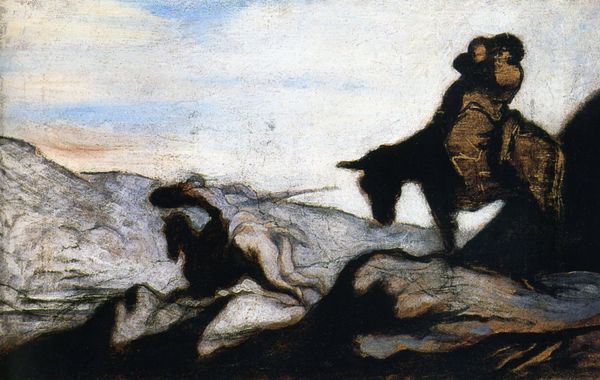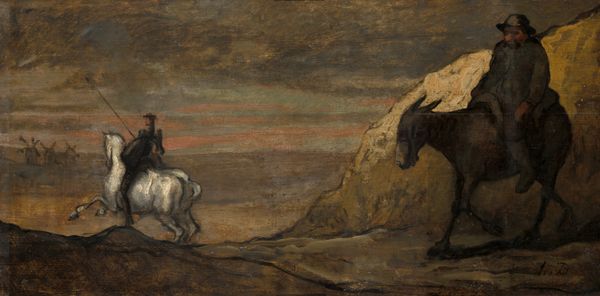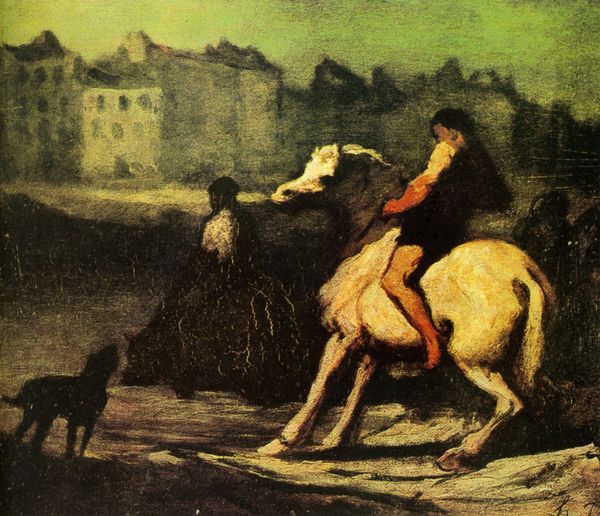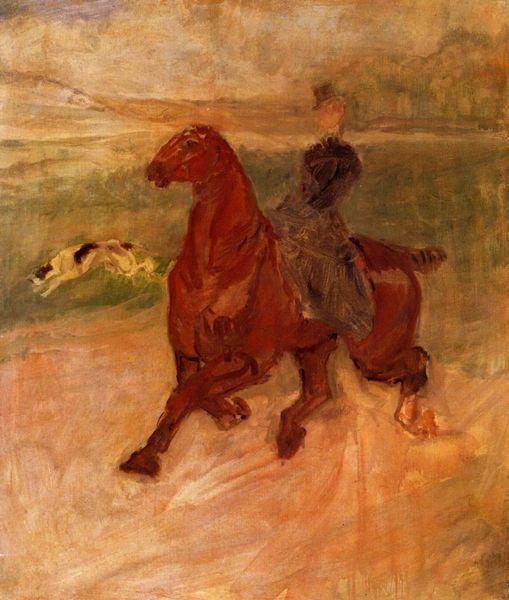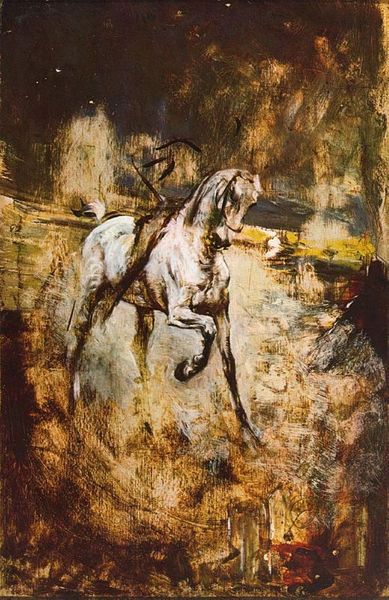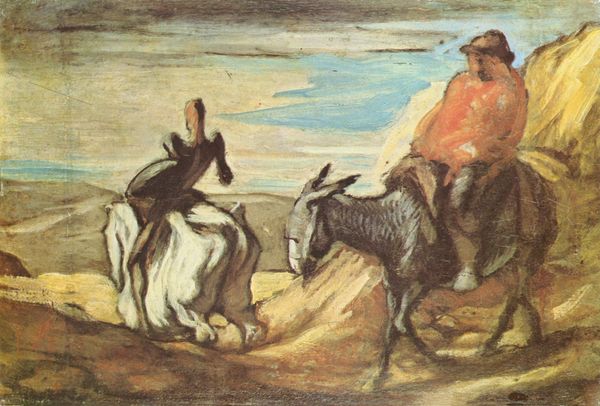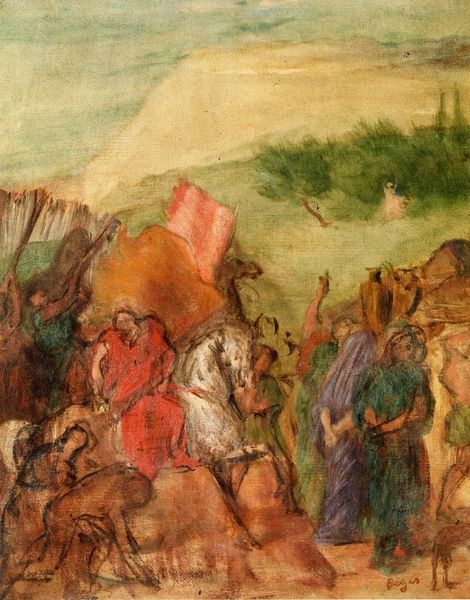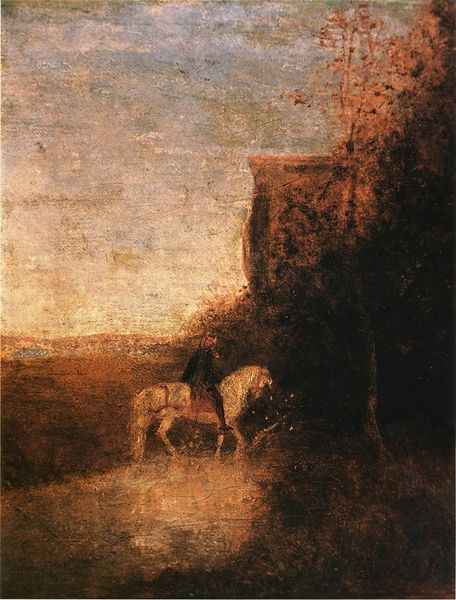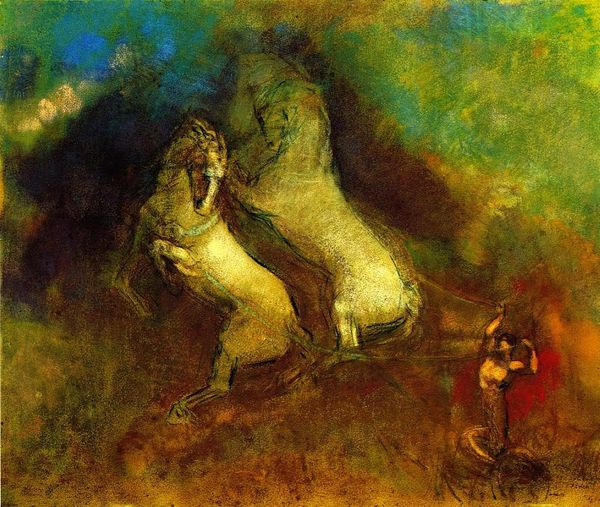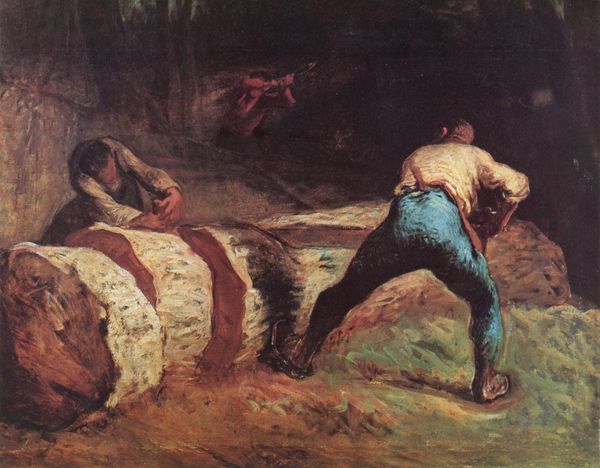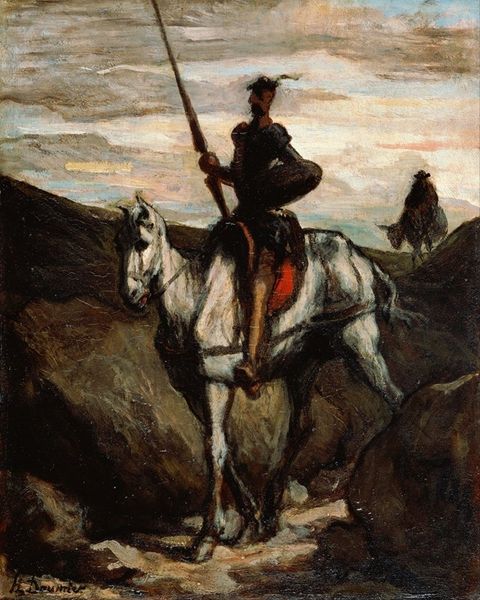
painting, oil-paint
#
portrait
#
animal
#
painting
#
oil-paint
#
landscape
#
figuration
#
oil painting
#
romanticism
#
horse
#
genre-painting
Copyright: Public domain
Editor: We’re looking at Honoré Daumier's *Don Quixote and Sancho Pansa*, an oil painting. It has a sort of melancholic feel. The brushstrokes are really visible and create a sense of movement and drama. How do you read the composition? Curator: The composition adheres to a principle of visual balance, although asymmetrically arranged. Notice how Daumier positions the figures along a receding diagonal, countered by the looming darkness of the landscape. This careful articulation of form serves not just as a means of depiction, but also operates as a self-referential comment on the painterly process. Editor: So you're saying the technique itself, the way the paint is applied, is as important as what's being depicted? Curator: Precisely. Consider how the dynamism created through the visible brushstrokes contributes to the emotive force of the scene. How might that contribute to the interpretation? Editor: It suggests a certain energy and passion. It moves the eye through the painting, focusing first on the details of the donkey, up along the rock, and then to Don Quixote. The figures aren't as important as the line that defines them? Curator: That assessment has merit. And it could be argued that the interplay of light and shadow further augments the overall affective power of the artwork. Notice how the darkness surrounds Sancho Pansa, making it seem as though he may not see Don Quixote at all, or vice versa. Editor: I hadn't thought about that. I'm starting to see the artist's mark on the figures, but in relation to the rest of the forms in the image. Curator: Yes, the emphasis on the aesthetic qualities allows us a deeper, richer, understanding of the visual construction. What seemed representational transforms to abstraction through light and shadow and depth of field, too. Editor: I can see now that it's much more than just an illustration from the novel. Curator: Indeed. The surface bears testament to the artist’s own conceptual and formal concerns, existing independent of subject matter.
Comments
No comments
Be the first to comment and join the conversation on the ultimate creative platform.
